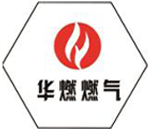
Sep . 25, 2024 16:21
Back to list
منظم الجهد الدقيق
The Intricacies of Precision Voltage Regulators
In today's increasingly electronic world, the need for reliable power sources is more critical than ever. At the heart of various electronic systems, from consumer electronics to industrial operations, the precision voltage regulator plays a pivotal role in ensuring that devices operate efficiently and safely. This article focuses on the significance, working principles, and applications of precision voltage regulators.
What is a Precision Voltage Regulator?
A precision voltage regulator is an electronic device designed to maintain a constant voltage output despite variations in input voltage or load conditions. Unlike standard regulators, precision voltage regulators offer tighter output voltage tolerances, often within a few millivolts. They are essential in applications where voltage stability is crucial for the reliable operation of sensitive electronic components such as microcontrollers, analog circuits, and sensors.
Working Principles
Precision voltage regulators function through negative feedback mechanisms. The basic operation involves continuously comparing the output voltage with a set reference voltage. When a deviation occurs, the feedback loop adjusts the output to correct the difference. This regulation can be achieved using various methods, including linear regulation and switching regulation.
1. Linear Voltage Regulators These devices provide regulation by adjusting the resistance to maintain a constant output voltage. They typically feature low ripple voltage and noise, making them ideal for audio and precision analog applications. However, they can be less efficient, especially at higher output currents.
2. Switching Voltage Regulators In contrast, switching regulators use an on-off control mechanism to maintain output voltage, significantly improving efficiency. By rapidly switching the input voltage on and off and smoothing out the result with inductors and capacitors, they are suitable for a wider range of applications, particularly where battery life and energy efficiency are priorities.
Characteristics of Precision Voltage Regulators
Precision voltage regulators come with specific characteristics that make them suitable for sensitive applications
.
- Temperature Stability A quality precision voltage regulator will maintain stable output voltage across varying temperatures, which is essential in environments subject to fluctuations.
منظم الجهد الدقيق

- Noise and Ripple Rejection The ability to minimize output noise and voltage ripple is crucial in high-performance applications, such as in RF receivers or precision instrumentation.
- Fast Transient Response This indicates how quickly the regulator can respond to sudden changes in load current, ensuring stable operation despite dynamic conditions.
Applications
The applications of precision voltage regulators are vast and varied, spanning across numerous industries
1. Consumer Electronics In devices such as smartphones, tablets, and laptops, precision voltage regulators ensure stable performance and efficiency, extending battery life and improving user experience.
2. Industrial Equipment Manufacturing machinery and control systems benefit from precision regulation to maintain operational reliability and safety.
3. Medical Devices In healthcare instrumentation, accuracy and stability are paramount, where precision voltage regulators in medical imaging equipment or monitoring systems directly impact performance.
4. Automotive Systems Modern vehicles integrate numerous electronic systems that rely on precise voltage supply to function correctly, from infotainment systems to engine control modules.
5. Telecommunications In data transmission equipment, where signal integrity is vital, precision voltage regulators prevent fluctuations that can disrupt communication.
Conclusion
Precision voltage regulators are an integral part of modern electronic design, ensuring reliability, efficiency, and stability across a myriad of applications. As technology continues to evolve, the role of these regulators becomes increasingly significant, enabling innovations while safeguarding the functionality of sensitive electronic devices. Understanding their principles, characteristics, and applications is essential for engineers and designers striving to create robust electronic systems in today's complex and demanding technological landscape.
Next:
Latest news
-
Safety Valve Spring-Loaded Design Overpressure ProtectionNewsJul.25,2025
-
Precision Voltage Regulator AC5 Accuracy Grade PerformanceNewsJul.25,2025
-
Natural Gas Pressure Regulating Skid Industrial Pipeline ApplicationsNewsJul.25,2025
-
Natural Gas Filter Stainless Steel Mesh Element DesignNewsJul.25,2025
-
Gas Pressure Regulator Valve Direct-Acting Spring-Loaded DesignNewsJul.25,2025
-
Decompression Equipment Multi-Stage Heat Exchange System DesignNewsJul.25,2025

